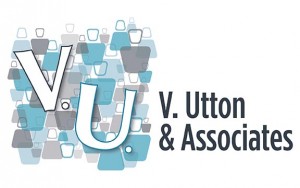The first part in this series serves to bring attention to the very need to give concerted consideration to three key elements of the Termination Event: namely, who, why and when. Additionally, and as HR Professionals, it is increasingly critical for you to be the voice of reason—in essence to be the organizations conscience—to ensure every aspect of the termination process is clearly and critically planned for.
Like many events, the Termination Event has a start and an end point, with a myriad of details and milestones through its cycle. As such, here are three preparatory considerations to achieve termination success!
Start with the end in mind
While the very thought of terminating an employee can and often emotes feelings of fear, apprehension and avoidance, it is in the end, an impactful business decision, and as with all business decisions, objectives help to keep actions aligned. Ask yourself: What will success look like? What do we expect to accomplish? What will this decision enable? Objectives will vary from organization to organization, and will be relative to the observer nonetheless, for the HR Professional, it is suggested that success be viewed from a Risk Management perspective–risk to organizational resources and organizational reputation.
In my experience and more often than not, an employer’s primary objective is quite simply, to receive acceptance of the severance offer, within the defined timeline. This is Termination Utopia! However, in my conversations with organizations during the planning stage, other key measures of success are often raised; specifically they are:
- The employee exits the organization in a timely and non-disruptive manner, and
- The organization is recognized for its termination practices
In all of this, consider the “survivors” – those staff who remain employed after the Termination Event. How do you want them to perceive the organization? What would you be proud to hear them say about the organization following the Event?
Guide the process
Keep in mind that as the HR Professional, you do not ‘own’ the decision to terminate an employee – unless the employee in question reports to you. The Line Manager (aka Releasing Manager) ultimately makes the decision to hire and in the same vein, makes the decision to terminate an employee. Your role is to provide expert guidance and counsel as it relates to organizational practices and regulatory requirements.
Procrastination, avoidance, and hesitation – all words that simply delay the inevitable. If as an organization, you have come so far as to identify the need to terminate, and your objectives around the need to terminate are based on sound business requirements, then an event of this nature is deserving of advanced placement on the calendar. When scheduling the date, be sure to stay clear of key employee milestone dates (refer to Part 1). Consult the Releasing Manager for a date that is compatible with his/her schedule – after all, the Releasing Manager will need to be available to deliver the news to the employee
The Employment Standards site provides a wealth of information related to termination and severance compensation, however, it should be noted that this site provides you with a set of minimum acceptable standards, and there may be circumstances that you encounter where it may be warranted to compensate beyond the minimum as a result of common-law findings. If you believe your circumstance is unusual, or could potentially be contentious, it may be in the best interests of the organization to receive a legal opinion.
Pay attention to the details
Once you know your objectives and an Event date is identified, your keen attention will be needed to ensure you cross every “t” and dot every “i”!
Here’s a checklist, although not an exhaustive one, of items you’ll need for Event day:
- Termination Letter – it articulates the terms and conditions of the employee’s separation (i.e. final day, payments and timing of payments, extension of benefits, etc.)
- Termination Meeting Script – it gives guidance to the Releasing Manager as to what they will verbalize to the employee during the termination event
- Meeting Space – ideally, a private space where the termination event can occur; consider ensuring it is equipped with water, Kleenex and a telephone
- Checklist of Organizational Property – it confirms the items that will need to be collected from/returned by the employee (i.e. security access, keys, corporate credit card, smartphone, etc.)
- Communications/Key Messaging – dependent on the nature of the employee’s role, it may be necessary to have versions of internal and external messages ready for distribution, closely following the termination event
- Transition Support Coach – to give dedicated personal and professional support on Event day and beyond as the employee transitions to new employment
- Empty Boxes – in the event the employee elects to immediately retrieve and pack up their personal belongings; as a gesture of courtesy, offer to deliver the items to the employees home address
- Taxi Chit – an employee may be too distraught to drive and/or board public transit; additionally, should they elect to take their personal belongings, prepared transportation will lighten the load
As the saying goes, “the devil is in the details”! Errors and/or omissions through the process can be costly – to both organizational resources and organizational reputation.
A thoughtful approach where the employee feels they have been treated with dignity and respect; where the employee has been compensated fairly and equitably and where surviving employees speak positively about the organization, in spite of the decision, are all signs of termination success.
The final part of this series will take a look at alternative options to termination. Have you planned for a termination lately?

